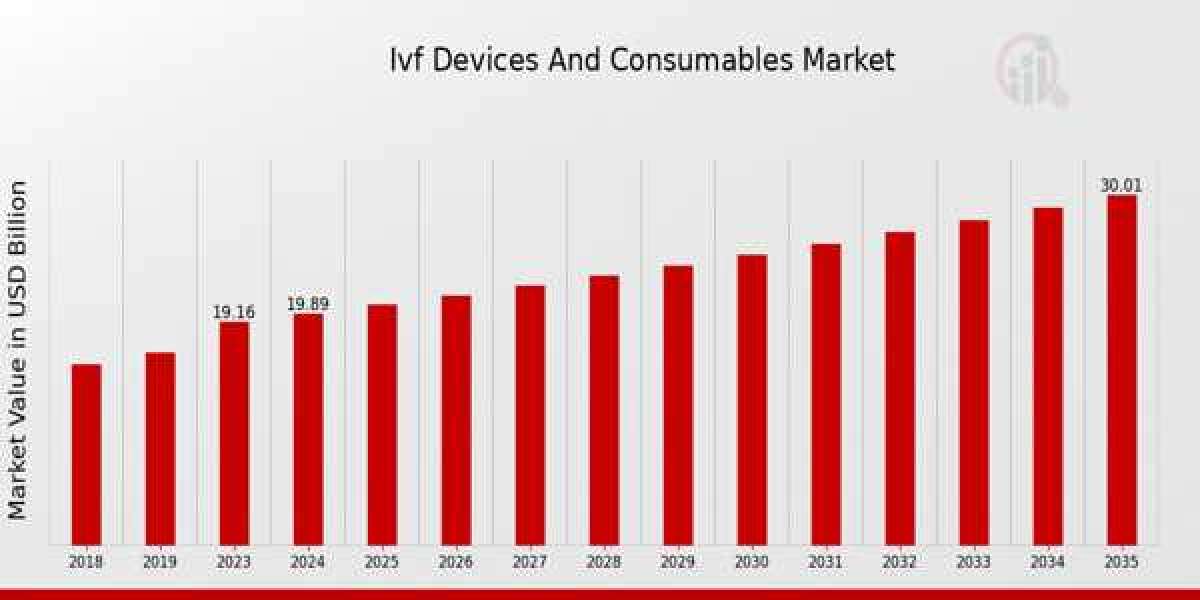A Booming Era for Fertility Innovation
In recent years, infertility has transitioned from a taboo topic to a prominent area of medical advancement and public discussion. As more individuals and couples seek fertility assistance, in vitro fertilization (IVF) has become a beacon of hope. With this surge in demand, the IVF devices and consumables market is witnessing exponential growth, fueled by evolving technologies and increasing awareness around reproductive health.
IVF, once a complex and costly procedure, is becoming more accessible and efficient—thanks to a diverse ecosystem of specialized instruments, embryo transfer catheters, culture media, cryopreservation tools, and incubators. These devices and consumables are critical in every phase of the IVF process, from egg retrieval to embryo implantation.
Driving Forces Behind Market Growth
Multiple factors are accelerating the expansion of the IVF devices and consumables market. First and foremost is the increasing incidence of infertility due to sedentary lifestyles, hormonal imbalances, environmental pollutants, and age-related factors. According to global estimates, one in six couples experience infertility issues—a statistic that continues to rise.
Additionally, social and cultural shifts are playing a role. The trend of delayed parenthood, same-sex couples opting for assisted reproductive techniques, and single-parent families choosing IVF are contributing to higher treatment adoption. Moreover, favorable insurance policies, government support, and rising investments in fertility clinics further stimulate demand for IVF equipment and disposable products.
Key Product Segments: Devices and Consumables
The IVF market comprises two major components—devices and consumables—each playing a crucial role in the success of fertility treatments.
IVF Devices:
Ovum aspiration pumps
Embryo culture incubators
Sperm analyzers
Micromanipulators and imaging systems
Cryosystems for sperm and embryo storage
These devices support delicate procedures with precision, sterility, and environmental control, making them indispensable for clinics.
IVF Consumables:
Petri dishes and test tubes
IVF culture media
Embryo transfer catheters
Pipettes and microdroplet plates
Cryopreservation media
The market for IVF consumables is particularly strong due to their single-use nature, ensuring sterility and reducing cross-contamination risks in labs.
Regional Insights: Growth Across Continents
North America leads the IVF devices and consumables market due to high infertility rates, well-established fertility centers, and technological adoption.
Europe, with supportive reimbursement structures and growing medical tourism, remains a key contributor.
Asia-Pacific is poised for rapid growth, driven by increasing awareness, rising disposable incomes, and improving access to fertility care in countries like India, China, and Japan.
The Middle East and Africa and Latin America are emerging players, with growing investment in reproductive health infrastructure.
Technological Trends Reshaping IVF
As demand grows, so does innovation. Emerging trends include:
AI-powered embryo selection systems that boost success rates
Time-lapse imaging for monitoring embryo development in real-time
Lab-on-a-chip devices for precise sperm and egg handling
Cryogenic preservation technologies with enhanced viability post-thaw
These advancements are pushing the boundaries of what IVF can achieve, making treatments more efficient, personalized, and successful.
Market Challenges to Navigate
Despite a promising outlook, the IVF devices and consumables market faces several hurdles:
High procedural and equipment costs remain a barrier, especially in low-income regions
Ethical and legal concerns regarding embryo handling and surrogacy laws
Limited insurance coverage in many countries for fertility procedures
Technical challenges like equipment calibration and culture media consistency
Overcoming these challenges will require ongoing policy support, cost-effective innovations, and public education to normalize fertility care.
Looking Ahead: A Fertile Future
The future of the IVF devices and consumables market looks promising. With rising infertility rates and changing societal norms, IVF is expected to become a mainstream option for family planning. Companies are focusing on affordable solutions, automation, and data-driven fertility care, which will not only enhance success rates but also improve patient experiences.
As technology continues to evolve, the next wave of IVF innovations will likely include remote monitoring, AI diagnostics, and personalized treatment pathways, solidifying IVF's place at the forefront of reproductive medicine.







